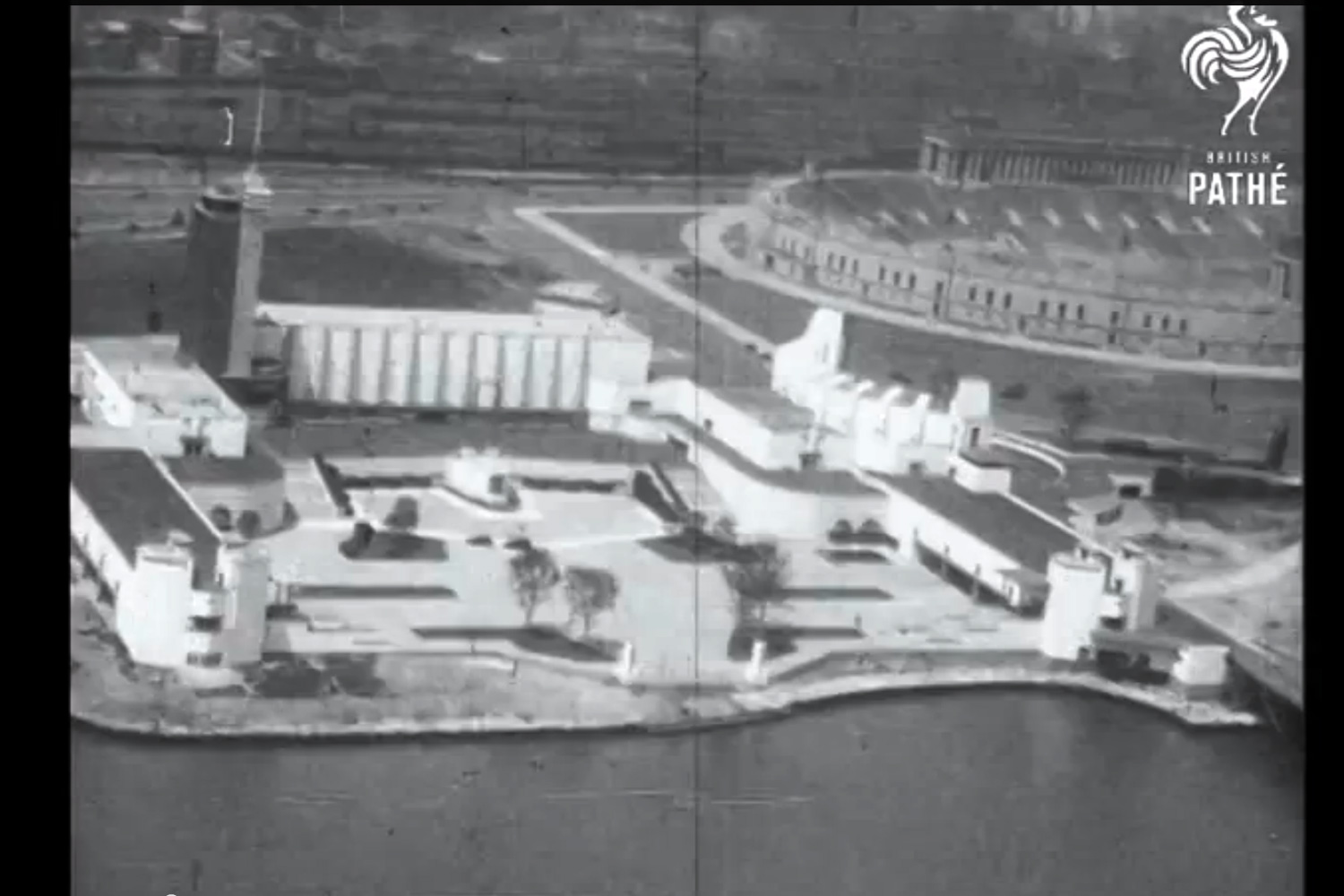One of the best things on the Internet are the archives of British Pathé, the newsreel company that was sort of the CNN of its time, covering the epic, visually dramatic, and slightly ridiculous. For a long time, their tens of thousands of films have been online. (I used one in one of my most pointless and favorite posts ever, figuring out a little historical mystery: the location of a parking elevator in downtown Chicago.)
Now they've put them all on YouTube, and Chicago makes some spectacular and spectacularly weird cameos.
Let's start with the cycling Steinlauf family of Chicago's West Side. If you think that dude who rides the somersaulting bike around Wicker Park has ingenuity, you haven't met the Steinhaufs, who put hacked pennyfarthings in their place.
The four Steinlauf brothers—Joe, Charles, Maurice, and Dave—all ran repair shops in the city, and were obsessed with bikes. The bike in the video that looks like a giant French horn is actually the foot of a brass bed, modified by Joe; the sewing-machine bike was built after his wife's sewing machine broke. It disappeared into his shop and returned as part of a bike.
The Steinlaufs also knew what to do with aggro drivers: "On another day Joe and Dave took up the cudgels for cyclists and pedestrians against those pesky road hogs, autoists. In whimsical mood they built a two-seated "sniper" bike and equipped it with 15 guns and pistols. [Joe was an avid gun collector who'd never fired a gun.] As if this weren't different enough, they gave it an airplane type steering wheel instead of handlebars, and mounted seven of the guns to the rear. The frame is made from airplane tubing, and the bike has gas and kerosene lamps, individual front and rear brakes, two speed gears shift for use in climbing mountains, back rests made of tires, and four bayonets."
This next film is from the city's home furnishings show circa 1961, reminiscent of Jacques Tati's Playtime, and features the prehistory of the "smart home": an oven operated by phone. "A few years from now, the lady of the house can go out and safely [ed. note: "safely"] cook that turkey by remote control." It's one of those technologies, like Chicago's brief midcentury experiment with Phonevision, a very very early form of pay-perview, that existed in primitive form with the technologies on hand.
Speaking of bad ideas, the 1959 Chicago Motor Show featured a miniature prototype of the Ford Glideaire, the "jet-propelled wheelless carriage," aka a hovercar intended to go 200-500 miles an hour. The Glideaire never came to be, despite what the Internet tells you; it turns out, given the central problem we have with cars is that they hit things, traction is a feature, not a bug.
The Glideaire was the brainchild of Andrew Kucher, vice-president of engineering at Ford. He'd been working on levitating cars for decades, beginning in 1928; the Levacar was initially conceived of as mass transportation, the same principle that brings us maglev trains.
"Now we're taking you back to the dim dawn of the World," and also the 1933 World's fair and a GIRAFFE-NECKED TERROR OF THE SWAMPS. It's sort of a combination of the Field Musem's dioramas and Disney's robot Lincoln.
"New York and Chicago By Night (1920-1929)," an early experiment in viral timelapse urban cinematography, well before the advent of the ambient techno music that would complete the genre.
"Scooter Nun (1966)" speaks for itself, years before the Segway revolutionized how malls are patrolled.
Ski jumping at Soldier Field, sometime in the 1930s. Americans are a lot better at ski jumping now.
And finally, the 1933 World's Fair, at day and night, beginning and end. The latter is remarkable for capturing the spectacular way in which the modernist, deco-influenced fair was lit.



